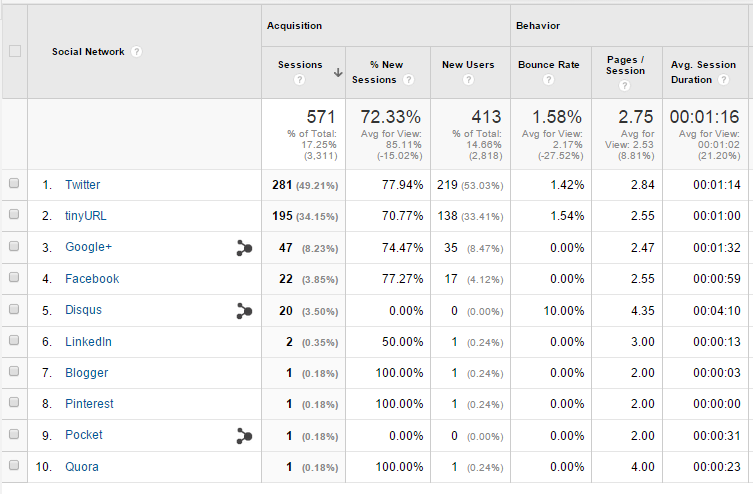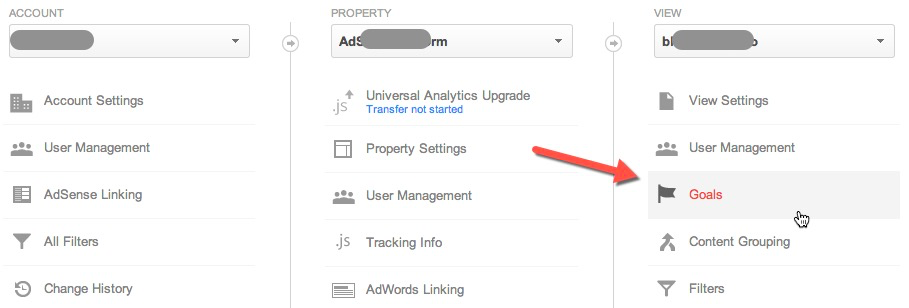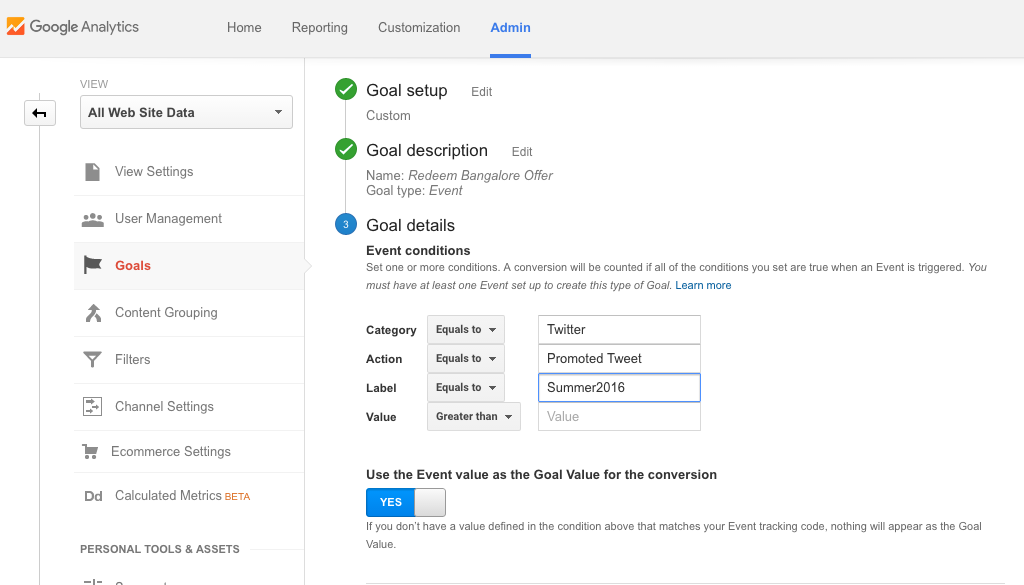Originally posted on Social Media Today
One of the best things about digital marketing is that you can measure almost everything. Social media analytics allow you to see what is (and isn’t) working, and ultimately drive more ROI from your efforts.
For Zoomcar, focusing on social media analytics as a primary marketing strategy has helped them grow quickly and become the second largest car-sharing company in the developing world.
Want to know their secrets? In this article I’ll share how to implement the same analytics strategies Zoomcar used to increase their conversions by 45%.
1. Identify your business goals
Setting goals is essential to informing your social strategy. It’s impossible to move in the right direction without clarity of what you’re working towards.
Zoomcar’s first step was to define their key business objectives:
a. Ecommerce revenue: The amount of sales from booking a rental car online.
b. New customer signups: The number of new registered users. These are leads who may book a car in the future.
c. Mobile app installs: The number of people who download the app to their phone.
d. Clicks to website: The amount of traffic to the website.
After defining these business goals, Zoomcar makes sure that every message, post and ad shared to their social media channels maps back to one of these objectives. For example, since one of their primary objectives is to rent cars through the website, they share promo codes, ideas for road trips and inspirational images to encourage customers to book a rental.
Just like Zoomcar, every one of your activities on social media should map back to a key business objective - even if that objective is purely branding, awareness or engagement. Next, we’ll show you how Zoomcar measures the performance of this content to make sure it actually leads to conversions.
2. If you can’t measure it, you can’t improve it
Once you’ve defined your business objectives, it’s important to have the right tools in place to track performance. Rather than rely on out-of-the-box social media analytics tracking, Zoomcar uses a powerful combination of Google Analytics and LiftMetrix to help them make smart business decisions and keep them from getting side tracked by vanity metrics.
By taking an analytics-focused approach, Zoomcar is able to track social strategies and tactics and measure their progress toward achieving a business objective. Now we’ll peek behind the curtain and show you exactly how they do it.
3. Use UTM parameters like a pro
Many marketers simply create an update on Facebook or Twitter by copying pasting the URL that they want to share. Then, they look at Google Analytics to see where the traffic for that post came from. They’ll see something like this:

But what does this really tell us? If you see a spike in traffic from Facebook, did those visits come from the link on your fan page or from an ad? What if someone shared your post and one of their friends clicked through? How can you tell the difference between all of that Facebook traffic?
We need a little helper called UTM parameters to attribute more information to our analytics. UTM parameters add extra information to any URL that you want to share on social media. For example, if Zoomcar wants to share a link on Facebook promoting local offers in Bangalore, they could just post the link as it is: http://www.zoomcar.com/bangalore/offers. But by attaching UTM parameters to the URL, they get some key data into Google Analytics about where the visitors to that page are coming from.
If that same promotion link was shared on Twitter, their URL would look something like this: www.zoomcar.com/bangalore/offers/utm_source=Twitter utm_medium=PromotedTweet&utm_campaign=Summer2016
You are permitted to add up to to 5 UTM tags per link, but Zoomcar sees success adding just the 3 tags to each post. Let’s take a look at each to see what they mean and how they are used.
a. utm_source
The utm_source parameter tells you which website the URL appeared on. In our example above, it is Twitter.
b. utm_medium
This parameter tags the type of social content used to promote the link. This example was a promoted tweet. You could also tag with newsfeed ad, boosted post, or mobile ad. Later when you look into Analytics, you will be able to see all of your Twitter traffic which came from that promoted tweet.
c. utm_campaign
This parameter designates a unique campaign or identifier to the link you are sharing. In the example link, Zoomcar used “Summer2016” but you can tailor this to your own initiatives.
Once you start applying UTM parameters to the links you share on social media, you can pinpoint exactly what traffic visited your site from an individual post, tweet or ad.
But Zoomcar takes this a step further and uses UTM parameters to show not only traffic, but progress toward their key business objectives. It might sound complicated, but it’s easy to do when you combine UTM parameters and Google Analytics Goals.
3. Create goals for every action
By using Google Analytics goal tracking with UTM parameters, Zoomcar can find out things like which ad on Facebook, which tweet on Twitter, or which link in their newsletter actually led to a conversion.
Zoomcar sets up Goals for every conversion opportunity in their sales funnel:
Customer Sign Up
Search For a Car Online
Subscribe to the Blog
Booking a Car (Ecommerce purchase)
To create a goal in Google Analytics, go the Admin view of your account and choose “Goals”

Match the Goal parameter fields exactly to the tags in your UTM links. The new field in this view is “Value”. Here, Zoomcar knows that every new customer that signs up from this offer is worth $5.35 (~25% of leads convert), so they input this dollar value to measure the goal.

Now, when they review their campaign analytics, they can clearly see goal performance and attribute it to the exact social media source.
You can find this data in Google Analytics under “Acquisition > Campaigns > All Campaigns”. Click on your campaign name to see conversions by post, like this:

In this case, 8,144 goal completions (customer signups!) were made at a value of 202,200 Rupees. These are the concrete, quantifiable results of social media activity from Facebook and Instagram.
Can you see how easy it is to calculate the ROI of your media spend now? If the value of your conversions is higher than the money you’re spending to promote your product, your ROI is positive and your boss will be delighted!
Optimize accordingly
Of course, since their marketing efforts are a set of ever-evolving experiments, Zoomcar will see some placements that have a negative ROI. Since they can zero in on both the high and the low performing shares, they can drop strategies that aren’t contributing positively to their goals. They also look for patterns in performance - like higher conversions in the afternoons or fewer conversions from Instagram ads, and optimize accordingly.
Data is King
Zoomcar’s approach to social media analytics reduces guesswork and grounds their social media strategy in facts. They use the insights from this data to quickly adapt to how their audience is responding to their social media posts and their ability to achieve business objectives. Since adopting this strategy, the company has grown over 130% annually.
Now it’s your turn - armed with this kind of data, it’s easier than ever to show the value of social media to your company’s bottom line.

